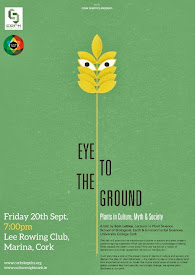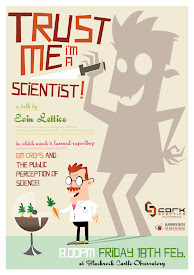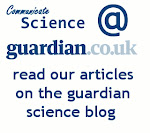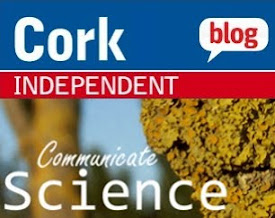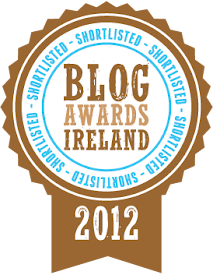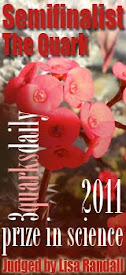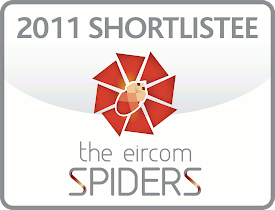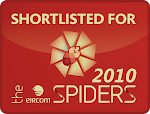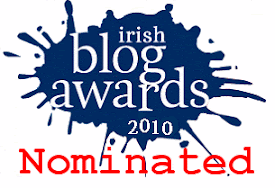In what has been described as the worst spate of poisoning in recent years, 10 protected birds of prey including three Red Kites, two White-tailed Eagles, a Golden Eagle, three Buzzards and a Peregrine Falcon have been confirmed poisoned in the Republic of Ireland.
Two Red Kites and a Peregrine were found dead in Co. Wicklow, a third Red Kite released in Northern Ireland was found dead in Co. Kildare, a Golden Eagle in Co. Leitrim, and Buzzards in west Waterford, east Cork and Donegal (one of which recovered from poisoning) . All of these were poisoned by ingesting meat baits laced with Alphachloralose.
Within the last few weeks two White-tailed Eagles were found dead near Beaufort, Co. Kerry. Toxicology analyses at the State Laboratory in Celbridge, Co. Kildare, and the SASA lab, Edinburgh, Scotland, confirmed that both eagles had been poisoned by Carbofuran, a substance previously used as a pesticide but now illegal in Ireland. Searches of land in the Beaufort area located a dead lamb, a raven also poisoned by Carbofuran, as well as other livestock in various stages of decomposition.
A male White-tailed Eagle released in Killarney National Park in 2008 was found in the River Laune near Beaufort by Stewart Stephens, Laune Angling Club, on 4 April and recovered the following day. A second male White-tailed Eagle, released in 2007 was found on land in Beaufort on 12 April. Both eagles were in excellent condition and had been surviving well in the wild for 2-3 years until poisoned. One eagle had been feeding on the carcass of a sheep when it died as wool was found in the crop along with meat. An investigation is ongoing by the Department of Agriculture and Gardaí in Killarney.
"The older male could have been one of the first birds to breed in the wild in Ireland in over 100 years""The loss of a further two White-tailed Eagles at this time is devastating", said Dr. Allan Mee, Manager of the White-tailed Eagle Reintroduction Project in Kerry. "The older male could have been one of the first birds to breed in the wild in Ireland in over 100 years had it survived. That it was in such good condition at the time of its death makes its loss even more tragic. We know that eagles can thrive in Kerry if given the chance but indiscriminate poisoning is literally killing our chances of re-establishing a population here" he added.
The deaths of these two birds brings to 13 the total number of White-tailed Eagles found dead, seven of which have now been confirmed poisoned, all in Co. Kerry. Fifty-five birds have been released in Kerry since 2007. "The loss of the older male is particularly hard to take because we have now lost 7 of the 15 eagles released in 2007. Year by year we are losing most of the oldest birds that could be breeding in a few years. Many of the birds have been finding sources of fish in the rivers and lakes for the first time this year which is a really positive sign. Unfortunately even birds that are intent on fishing along our rivers don't escape the threat of poisoning. If there is a carcass laced with poison in fields nearby eventually one of the eagles will be drawn to it. We can't fully protect these birds unless we stop indiscriminate poisoning" Mee added.
Despite this threat many eagles have travelled the length and breadth of the country, including at least three birds that travelled to Scotland and back, without being harmed. "One male White-tailed Eagle travelled to the Orkney Islands off the north coast of Scotland and back over an eight month period. Another satellite tracked eagles called Fiadhna (after 9 year old Fiadhna Tangney in the Black Valley) left Killarney after release in August 2009 and has now visited 28 of the 32 counties in Ireland" Mee commented.
"The future for the reintroduction is cooperation and mutual respect"After spending the winter in the Antrim hills, Fiadhna moved west into Donegal then back east to the Sperrin Mountains, travelled on to the Cooley peninsula in Louth, before crossing west to the midlands. She then headed south to Kerry but then crossed into Clare and on to Connemara before heading east to Wicklow. In the last few weeks she returned to Northern Ireland and is now back in the Antrim Hills. "It is heartening to know that Fiadhna can cross the country and roost and feed on literally hundreds of farms in many counties without coming to any harm. To my mind this shows that the vast majority of farmers respect nature and do not use poisons. Just the other day we had a phone call from a farmer in Antrim who was happy to report that Fiadhna was back on the same farm she left months ago. The future for the reintroduction is cooperation and mutual respect between ourselves and the farming communities that eagles inhabit" Mee added.
Cooperation and support from the donor country, Norway, has been critical to the success of the White-tailed Eagle reintroduction in Kerry. However, the continuing loss of eagles to poisoning has cast a shadow over the future of this ambitious programme. The Directorate for Nature Management in Norway has supported the reintroduction programme to reestablish the White-tailed Eagle as a breeding bird in Ireland. Permits to collect up to 20 fledglings per year from Norway during 2007-2009 have been issued given that the population in Norway is a healthy and growing population, and based on the reports on Ireland still being a well suited area for the species. The Directorate of Nature Management is concerned to learn about the casualties caused by illegal poisoning. In Norway there is no evidence that White-tailed eagle predates on livestock.
The Directorate believes that the Irish authorities will take the necessary steps to correct this situation, and give the White-tailed eagle a future in Ireland.
Of three poisoned Red Kites found in the last month, a female found in Kildare had been released in Co. Down in 2008 as part of a reintroduction programme in Northern Ireland managed by the Royal Society for the Protection of Birds. The RoI Reintroduction in Co. Wicklow is managed by the Golden Eagle Trust in partnership with the Department of the Environment, Heritage, and Local Government. Although some Red Kites from Wicklow and Co. Down have crossed the border in past years, this is the first kite from Northern Ireland to be found poisoned in the Republic.
Robert Straughan, Red Kite Project Officer commented "The RSPB are seeking a coordinated approach between all relevant statutory and non-statutory organisations to tackling crimes against birds of prey in Northern Ireland. The death of one of our red kites in the Republic also highlights the need for us to co-ordinate our efforts cross-border.
In NI, the new Wildlife and Natural Environment Bill will introduce tougher fines and custodial sentences for those committing crimes against wildlife, and we are also seeking an amendment to the Bill to make it an offence to possess certain pesticides. This would close a legal loophole which allows an individual to possess highly toxic chemicals for which they could have no legitimate use other than to commit an offence of poisoning animals or birds.
Political support has been demonstrated by MLAs, including Environment Minister Edwin Poots, who signed our pledge to stop illegal killing of birds of prey, which gathered over 200,000 signatures as part of RSPB's Birds of Prey campaign. The Ulster Farmers' Union have also demonstrated their support for our Red Kite project by including a red kite in their newly re-designed logo".
"All the evidence points to Alphachloralose being the poison of choice"Two Red Kites were found also dead in Co. Wicklow in mid-March. One was found floating in the sea off Wicklow Head by members of the RNLI. A second bird was found by a member of the public on a road in west Wicklow. Initially both birds were thought to have died from natural causes but tests revealed toxic levels of Alphachloralose, a narcotic used to target crows and foxes. "All the evidence we have points to Alphachloralose being the number one poison of choice in use today and the most prevalent toxin threatening the viability of the Red Kite reintroduction in Wicklow", said Damian Clarke, Project Manager for the Golden Eagle Trust. "Despite the fact that it has been banned for some years in the UK we still continue to allow its production and use in Ireland. This is unsustainable and we have a duty to afford Kites from Northern Ireland the same protection as in the UK", Clarke added.
Although the use of poison on meat baits for the control of crows was banned in 2008, the use of meat baits to kill foxes is still permitted under current regulations (Protection of Animals Act 1965). This loophole has allowed the continued use of poison and continue to pose a huge threat to our native birds of prey. However, an amendment to the Wildlife Act which will outlaw all use of poison on meat baits is imminent. In addition, the Department of Agriculture, Fisheries and Food fails to ensure that farmers, who are in receipt of direct payments (Single Farm Payment and Rural Environmental Protection Scheme) under the EU Common Agricultural Policy, comply with the Cross Compliance Policy and that they duly implement the Statutory Management Requirements in respect of the obligation not to harm Annex 1 birds of prey (which are protected under the Birds Directive). The Golden Eagle Trust is calling on the Department of Agriculture to initiate immediate farm inspections where poisoning is found to occur.
The ongoing use of toxins in the Irish Agri-Food industry will in time begin to tarnish the very valuable image of natural clean Irish food products especially in foreign markets. The Irish farming sector quite rightly highlights the very highest environmental standards our farmers follow. But the growing evidence of illegal use of poison by a tiny minority of sheep farmers is a gross contradiction of this valuable marketing tool used by an Bord Bia and others. Using poisons tarnishes the clean, green image that the Irish agri-food sector has built its reputation on.
The fact that the vast majority of farmers successfully produce food without recourse to poisons begs the question why a small minority can undermine the good image of Irish food production and rural development by using poison. Likewise, poisoning does nothing to enhance the image of the Irish countryside which is important to the tourism industry. On the contrary, ecotourism including wildlife tourism and eagle watching safaris bring in over 2 million pounds annually to the economy of Mull in western Scotland and have the potential to be an important additional selling point in Kerry where eagle tourism is just taking off. Visitor numbers at Glenveagh National Park have increased over the past few years and the resident Golden Eagles have proved to be an important attraction to the public
This report originally appeared on the website of the Golden Eagle Thrust.



















